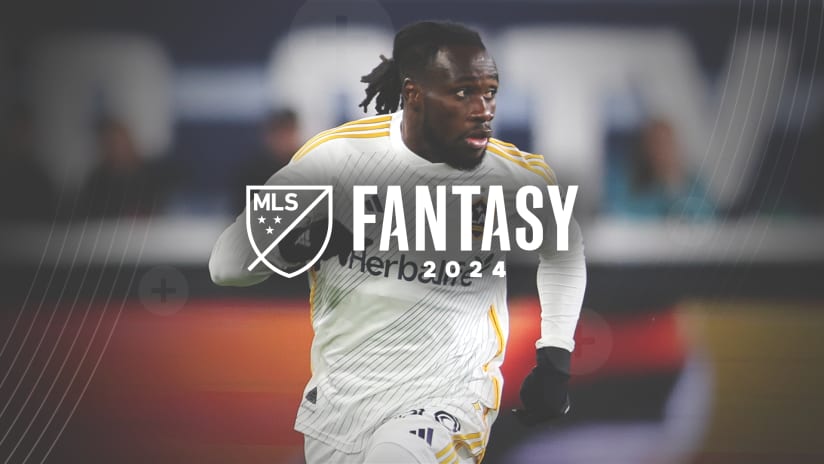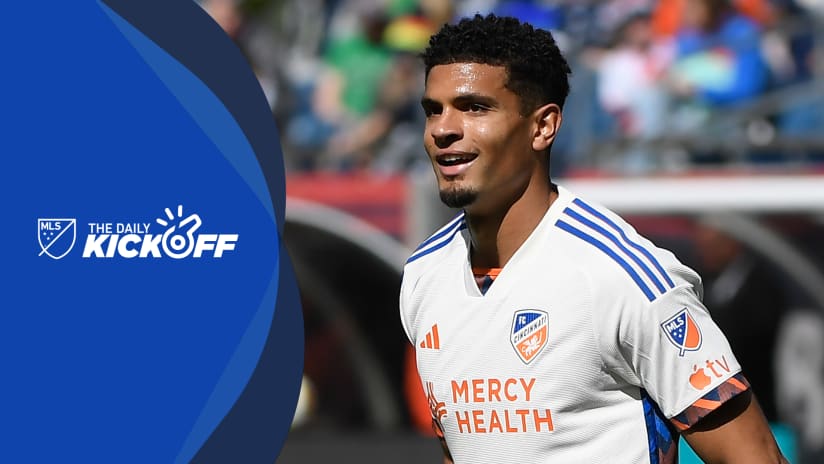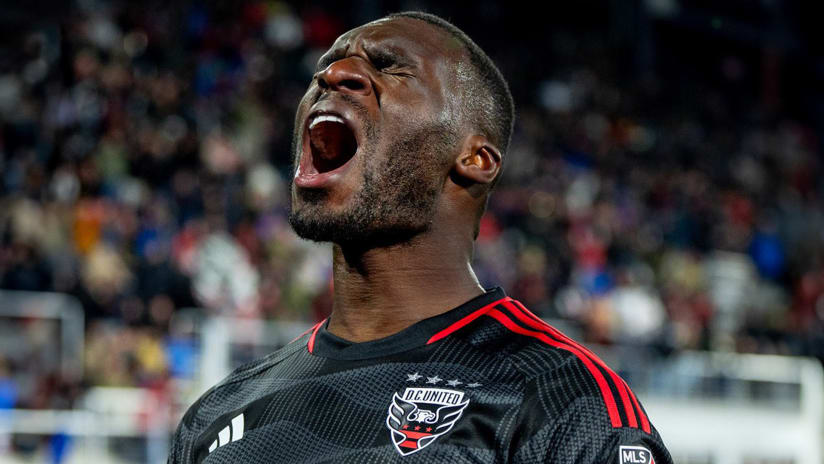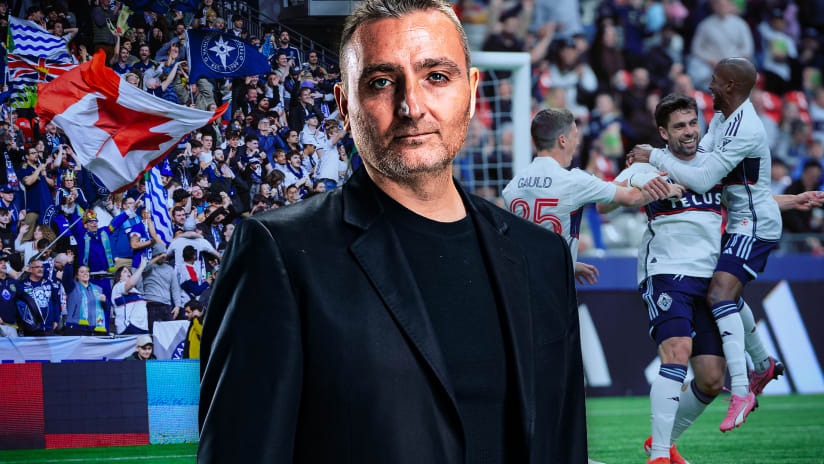Just as they led the way on the field last season, Major League Soccer defending champions Houston Dynamo may be establishing the league-wide model when it comes to establish youth player development programs.
The league has ordained that every team begin a youth development setup, with the idea that players with the system for at least 2 years can be signed by their developing club without going through the MLS draft, even if they choose to compete in college soccer during the interim.
Advocates of professional youth development tend to look longingly at the youth setups in Europe and South America, where professional clubs are the be-all-end-all of youth player development, controlling the teams, coaches and players from an early age. Trying to replicate that system in America is difficult on many fronts however, including limited financial appeal of the entry level professional opportunities, our society's pre-disposition toward involvement in scholastic sports and activites and, perhaps most significantly, the well-entrenched interest of the pay-to-play competitive club system.
The Dynamo seems to have found a middle ground between Ajax Amsterdam and the State Cup, and they've hit that ground running to establish a promising developmental and competitive program.
James Clarkson was brought on board last year to lead the effort. Clarkson's hiring is cited as one of the reasons the team has been able to get moving so quickly. He was the director of coaching for the South Texas Youth Soccer Association and thus had a good grasp of the club landscape and player pool for the area.
"James and The Dynamo did an outstanding job of coming to us first and meeting with us several times about how to best go about it," said Lee Baker, director of coaching for Texans FC, one of the leading youth clubs in the Houston area. "They really evaluated the club landscape of the area and probably learned from some of the mistakes that FC Dallas made."
Baker's description of FC Dallas' decision to operate its youth program through the club formerly known as Dallas Inter, reflects a common concern among existing youth clubs when it comes to MLS getting involved with player development. Existing clubs are afraid that the MLS teams will become competitors for the large sums of money youth soccer families pay to clubs, which is the very livelihood of youth soccer coaches.
"Doing it this way gives it more of an ODP kind of feel" Baker continued. "That makes it a much more attractive thing than to think they will be competing against us. The directors of the youth clubs in this area felt they were trying to do what's in the best interest of soccer and player development, not just themselves."
"This way" is the establishment of a once-per-week academy night, beginning in early February, in which the Dynamo staff will work with a select group of players via classroom sessions, on-field training and fitness training. Along with the Wednesday night sessions, the 2 pools of 30 players (U15 and U18) will participate in select competitions such as summer trips to Mexico and an April expedition to the Dallas Cup.
Perhaps most significantly, the program is free of charge.
"We looked at what is going on in other markets," Clarkson said. "We won't be playing in a local league or trying to win a state championship. This is purely a developmental process. Our goal is to provide (Dynamo head coach) Dominic Kinnear 1 or 2 players per year he can consider for the Reserves or maybe someday the 1st team."
Players have been chosen through some high-profile tryout sessions and by utilizing the scouting network within the South Texas ODP setup. Clarkson said the wider age spans in the training pools reflect the patience the club intends to exercise in developing and evaluating playing talent.
"Not all the kids are ODP players, but all are from South Texas. Some kids find it difficult to break in (to ODP) if they are a late developer," he said. "With something like this, we can see them and give them time and continue to work with them. We know some players might be at an age disadvantage. We want to give them time to see their full potential."
Even with a somewhat limited competitive schedule (along with the trips to Dallas and Mexico, the club hope to arrange some one-off matches with other MLS clubs, and rumors of an MLS youth competition persist), Clarkson is adamant the program won't be taking players from their club programs for matches.
"We're trying to offer games and experiences above what they are already getting, so there's no point in taking them to play at the same event their club is going to," Clarkson said. "So I've put in a rule that if we and the club are playing at the same event, like the Dallas Cup, the player plays with his club team."
Clarkson said the quality of the training experience will be the standard by which his program is measured.
"We want to create a professional environment that somewhat mirrors what the 1st team is doing, and so we want to expose them to the 1st team as much as possible," he said. "We'll have a spring break minicamp and one of the things we'll have them spend time at is watching the 1st team train, so they can see how good they are, and the commitment those players put in. All the kids want to be professionals, but often they don't know how good they have to be and the sacrifices they have to make to get there."
Clarkson said the Dynamo coaching staff has embraced the program.
"We're very fortunate that Dominic and (assistant coach) John Spencer both have shown a great interest in what we're doing," Clarkson said. "Not many of the other teams have had their staff put in as much time as these coaches are. They were out all weekend (at a recent U18 tryout) watching games and evaluating players. The more we get them involved and talk to the kids, the better it is for the program."
Clarkson also added that he expects the Dynamo youth program to continue working in conjunction with the South Texas ODP system, particularly with its scouting network.
Baker noted that his club sees the chances for his players to be involved as a plus, giving them the chance to improve on the field, which can only help his club. He allowed that as the program progresses, some adjustments may need to be made as top players are possibly incorporated into the MLS youth setup in a more full-time capacity.
"The youth soccer culture is changing and getting more like they have it overseas. It's a legitimate goal (for a player) to be part of a program like that, but there are obviously a lot of differences between us and a country like England, where you have so many pro clubs in a much smaller area," Baker said. "It may be that what the Dynamo have done with sharing the players works as well here as that does there. There are realities within MLS about how many coaches they can afford to hire and that sort of thing. Maybe we also need to look at the youth clubs working on starting to develop players at younger ages.
"Certainly there could be some conflicts as we work it out, but this is a great start and it's important for the area (club) directors to see that the Dynamo are keeping soccer and player development at the forefront," he continued. "If they continue to do that I feel it can work."
This story has been reprinted with permission from www.topdrawersoccer.com and was not subject to the approval of Major League Soccer or its clubs.











